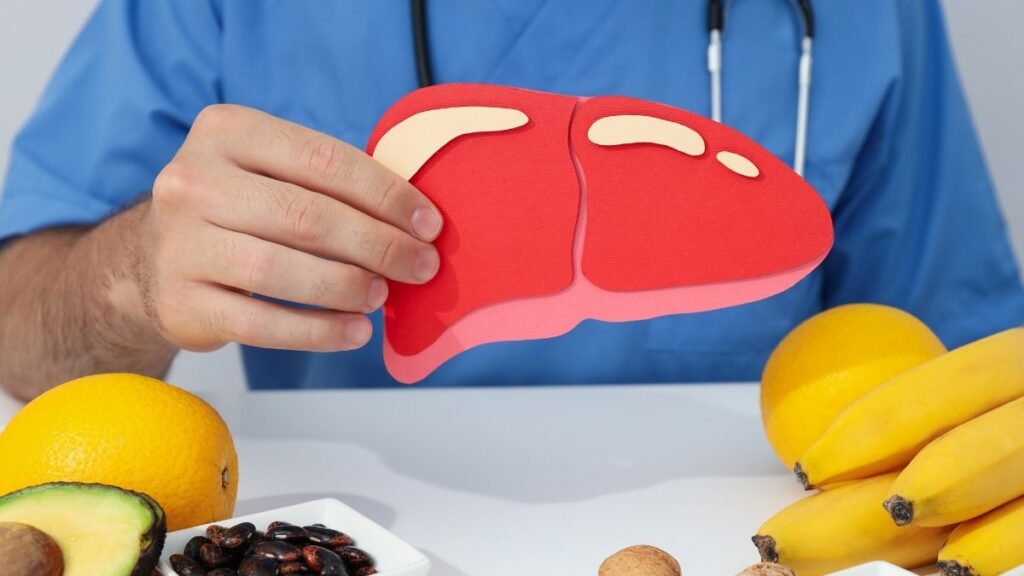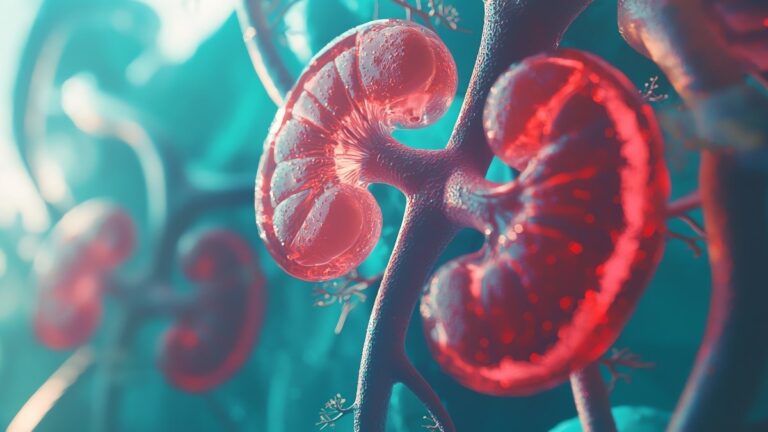The Silent Danger Lurking in Diet Drinks: Seniors Reveal What Doctors Didn’t Warn Them
For years, you likely made the responsible choice: switching to diet drinks to manage your weight or control blood sugar. But what if that “healthy” choice was a silent danger? You may be following outdated advice while still struggling with unexplained belly fat, or new worries about your heart and memory.
This article will deliver the latest 2024-2025 medical evidence on the serious diet drink health risks seniors face. We will explore new research linking artificial sweeteners to significant risks for the brain, heart, liver, and even bones.
Most importantly, you will receive a clear, actionable plan to break the habit and reclaim your health.
The “Diet” Deception: What One Can Per Day Costs Your Health
🧠 Brain
Linked to a nearly 3x higher risk of stroke and dementia.
Cognitive decline equivalent to 1.6 years of extra aging.
❤️ Heart
Associated with a 31% higher risk of ischemic stroke in postmenopausal women.
🥓 Liver
Linked to a 60% higher risk of metabolic dysfunction-associated steatotic liver disease (MASLD), or fatty liver.
📏 Waistline
Daily drinkers (65+) saw a waist increase of over 3 inches in 9 years, vs. less than 1 inch for non-drinkers.
🦴 Bones
Cola beverages (both diet and regular) are linked to lower bone mineral density in women.
The Weight of the Evidence — A Link to Stroke, Dementia, and Heart Disease

For decades, artificially sweetened beverages (ASBs), commonly known as “diet drinks,” have been marketed as a virtuous choice. Positioned as a tool for weight management and a “healthy” alternative to sugar, their consumption has become widespread.
However, a growing and increasingly consistent body of large-scale epidemiological evidence has begun to challenge this narrative.
This report opens by examining the findings from two of the most respected, long-term observational cohorts in medical science: the Framingham Heart Study (FHS) and the Women’s Health Initiative (WHI).
The data from these studies, once dismissed by some as statistical “association,” has flagged a disturbing correlation between the regular consumption of diet beverages and the very diseases consumers seek to avoid: stroke, dementia, and heart disease.
The Framingham Warning: A Tripled Risk for Stroke and Dementia

The Framingham Heart Study (FHS), a landmark, community-based cohort study that has formed the bedrock of modern cardiovascular epidemiology, has provided some of the most alarming data on this topic.
Researchers monitoring participants in this multi-generational study published findings in the American Heart Association’s preeminent journal, Stroke, that drew a direct and startling line between diet drink consumption and cerebrovascular disease.
The study’s findings were stark: individuals who reported consuming at least one artificially sweetened beverage daily were found to be almost three times as likely to develop a new stroke or dementia compared to those who did not consume any.
To provide the precise scientific context, the study analyzed two different FHS cohorts. For the stroke analysis, 2,888 participants over the age of 45 were followed; for the dementia analysis, 484 participants over the age of 60 were followed.
Researchers monitored this population for 10 years to track the development of new (incident) disease. After adjusting for multiple co-factors, the results showed a specific and dramatic increase in risk.
The hazard ratios (HR), which measure the frequency of an event in one group compared to another, were:
Ischemic Stroke (clot-caused): HR = 2.96 (95% Confidence Interval, 1.26–6.97). This figure indicates a 196% increased risk, or a near-tripling of danger, for those with a daily diet beverage habit compared to non-consumers.
Alzheimer’s Disease Dementia: HR = 2.89 (95% Confidence Interval, 1.18–7.07). This represents a 189% increased risk for the most common form of dementia.
Perhaps the most potent and non-obvious finding from the FHS analysis was what it didn’t find. The researchers reported that sugar-sweetened beverages were not associated with an increased risk of stroke or dementia.
This particular detail is critical as it presents a significant challenge to the most common counter-argument: “reverse causation.”
The reverse causation theory posits that the drinks themselves are not harmful; rather, individuals who are already overweight, obese, or have pre-existing conditions (like diabetes) are the ones who switch to diet drinks to manage their health.
In this scenario, the pre-existing illness—not the drink—is the true cause of the stroke or dementia.
The Women’s Health Initiative: A “Red Flag” for Postmenopausal Women

The findings from Framingham do not stand alone. They are corroborated by an even larger study, the Women’s Health Initiative (WHI), which provided data on 81,715 postmenopausal women, ages 50 to 79, from 40 clinical sites across the U.S.
This study, also published in Stroke, focused on a “heavy intake” cohort, defined as women consuming two or more artificially sweetened drinks per day.
Compared to women who rarely or never drank diet beverages, this high-consumption group faced a significantly elevated risk profile across multiple severe health outcomes:
23 percent more likely to have a stroke of any kind.
31 percent more likely to have a clot-caused (ischemic) stroke.
29 percent more likely to develop coronary heart disease.
16 percent more likely to die from any cause (a measure known as all-cause mortality).
Beyond these general statistics, the WHI study was large and detailed enough to identify specific subgroups for whom the risk was not just elevated, but catastrophic.
For certain women, consuming two or more diet drinks daily more than doubled their stroke risk:
Obese women (without previous heart disease or diabetes) were 2.03 times as likely to have a clot-caused stroke.
African-American women (without previous heart disease or diabetes) were a staggering 3.93 times as likely to have a clot-caused stroke.
This data pinpoints a profound health equity concern, indicating that the risk of these products is not distributed equally across the population.
Even more importantly, the WHI study provided the first major clue to the mechanism of harm—a clue that, as Part 3 of this report will detail, is now being validated by cellular-level research.
The study did not just find a general link to “stroke.” It found a doubled risk for a very specific type of stroke: small artery occlusion. This is not a clot that forms in the heart and travels to the brain (a cardioembolic stroke). This is a blockage of “one of the very small arteries within the brain”.
The New Frontier of Risk — Cognitive Decline, Liver Disease, and Metabolic Chaos

The evidence linking artificial sweeteners to poor health outcomes has not stood still since the landmark WHI and FHS publications. On the contrary, a new wave of research, some published as recently as 2025, has expanded the risk profile far beyond stroke and heart disease.
This new frontier of investigation reveals potential links to accelerated cognitive aging, severe liver disease, and the very metabolic dysfunction these products are marketed to prevent.
This section explores the emerging data that is painting an even more complex and concerning picture of the systemic effects of these common food additives.
Beyond Stroke: The Midlife Link to Accelerated Cognitive Decline

While the Framingham study linked diet drinks to a dementia diagnosis, a major 2025 study published in Neurology, the medical journal of the American Academy of Neurology, has explored the more subtle, preceding stages of cognitive decline.
This longitudinal observational study followed 12,772 Brazilian adults (mean age 51.9 years) for an average of eight years.
The research was comprehensive, examining the consumption of seven common low- and no-calorie sweeteners (LNCSs): aspartame, saccharin, acesulfame-k, erythritol, sorbitol, xylitol, and tagatose.
The results were deeply concerning. The study found that individuals who consumed the highest amounts of these sweeteners experienced a 62% faster rate of cognitive decline in functions like memory and verbal fluency, compared to those who consumed the lowest amounts.
To make this abstract finding more tangible, the researchers quantified the effect: the faster cognitive decline observed in the high-consumer group was equivalent to 1.6 years of extra brain aging.
As Dr. Claudia Kimie Suemoto, the study’s lead author, explained, “It does not mean someone instantly feels older, but rather that their brain function may be aging at a faster pace.
The significance is that even small accelerations in cognitive decline, when accumulated over years, can increase the risk of earlier or more severe impairment later in life”.
The Unintended Consequence: From “Diet” Drink to “Fatty Liver”

The primary marketing position of diet beverages is that they are a “safe” choice for metabolic health, an alternative to the well-known liver-damaging effects of excess sugar.
However, brand-new research presented at UEG Week 2025 has directly challenged this assumption, with results that are nothing short of shocking.
The study analyzed data from over 120,000 participants in the UK Biobank, a massive and detailed medical database.
Researchers examined the risk of developing Metabolic Dysfunction-Associated Steatotic Liver Disease (MASLD), formerly known as non-alcoholic fatty liver disease (NAFLD) and the most common chronic liver condition worldwide.
The study compared high consumers (over 250g per day) of both sugar-sweetened beverages (SSBs) and low- or non-sugar-sweetened beverages (LNSSBs), i.e., “diet” drinks. The results upended expectations:
High consumers of sugar-sweetened beverages had a 50% higher risk of developing MASLD.
High consumers of “diet” (LNSSB) beverages had a 60% higher risk of developing MASLD.
The “diet” drink, far from being a protective alternative, was associated with an even higher risk of developing fatty liver disease than its sugar-filled counterpart.
But the most significant finding was related to the “hard endpoint” of mortality. Over the median 10.3-year follow-up, 1,178 participants developed MASLD and 108 died from liver-related causes.
While SSB consumption was not significantly linked to liver-related mortality, LNSSB (diet drink) consumption was.
The Weight Control Paradox: The WHO Guideline and the SALSA Study

The entire premise of the diet beverage industry rests on a single, intuitive claim: “zero calories” equals “weight control.” This premise has now been officially and globally challenged by the world’s highest health authority.
In May 2023, the World Health Organization (WHO) released a new guideline based on a systematic review of all available evidence. The new directive formally recommends against the use of non-sugar sweeteners (NSS) for weight control or to reduce the risk of noncommunicable diseases.
The WHO’s reasoning for this dramatic reversal was twofold:
Lack of Efficacy: The review found no evidence of any “long-term benefit in reducing body fat in adults or children”.
Evidence of Harm: The review suggested “potential undesirable effects from long-term use,” including an increased risk of type 2 diabetes, cardiovascular diseases, and mortality in adults.
As Francesco Branca, WHO Director for Nutrition and Food Safety, stated, “Replacing free sugars with NSS does not help with weight control in the long term… NSS are not essential dietary factors and have no nutritional value. People should reduce the sweetness of the diet altogether… to improve their health”.
This counter-intuitive finding—that diet drinks may not help with, and may even hinder, weight management—is strongly supported by real-world, long-term observational data.
The findings demonstrated a striking “dose-response relationship”:
Non-diet soda drinkers: Waist circumference increased by less than 1 inch ($0.80$ inches) over the follow-up period.
Occasional diet soda drinkers (less than one per day): Waist circumference increased by almost 2 inches ($1.83$ inches).
Daily diet soda drinkers: Waist circumference increased by over 3 inches ($3.16$ inches).
These results, as the SALSA researchers noted, suggest diet sodas may be “free of calories but not of consequences”. The “calorie-free” illusion is shattered.
The data implies that these sweeteners may trigger metabolic chaos, possibly by interfering with gut bacteria, appetite regulation, or insulin signaling, leading to the opposite of the intended effect.
Critically, the SALSA study focused on abdominal fat. The “tire around the middle” is not just a cosmetic concern; it represents an accumulation of visceral fat around internal organs, which is a known and powerful driver of inflammation, metabolic syndrome, and the very cardiovascular diseases the diet drink consumer is trying to avoid.
The Sweetener “Watchlist”: What’s Hiding in Your Food?
Wanted: Artificial Sweeteners
Names
- Aspartame
- Saccharin
- Sucralose
- Acesulfame K
Risks
- Linked to cognitive decline.
- May cause metabolic disruption.
- Increased risk of Type 2 diabetes.
Wanted: Sugar Alcohols
Names
- Erythritol
- Xylitol
Risks
New 2024-2025 research links these to increased blood clot activity, raising the risk of heart attack and stroke.
Unlocking the Mechanism — How “Safe” Sweeteners May Turn Dangerous

For years, the concerning data from epidemiological studies (as detailed in Parts 1 and 2) were often held at arm’s length, categorized as “association, not causation.”
It was plausible to argue that an unknown, confounding factor was at play. However, this is the most critical juncture of the report. We now move from large-scale observation (the what) to the laboratory bench (the how).
This section will detail the new and emerging mechanistic science that provides a direct, plausible, and biologically coherent explanation for how these sweeteners may be causing the harm observed in the population studies. This new evidence connects the dots, transforming the conversation from correlation to causation.
The Clotting Connection (Erythritol and Xylitol)

This section directly addresses the “clot-caused stroke” findings from the Women’s Health Initiative.
A series of groundbreaking studies from the Cleveland Clinic, led by Dr. Stanley Hazen, has provided a “smoking gun” mechanism by investigating a class of sweeteners known as sugar alcohols (polyols), specifically erythritol and xylitol.
Erythritol, in particular, is widely used in “keto,” “zero calorie,” and low-carb processed foods.
The research began with an observational finding: in studies of over 4,000 people in the U.S. and Europe, the team found that individuals with the highest circulating blood levels of erythritol were at an elevated risk of experiencing a major adverse cardiovascular event (MACE), including heart attack and stroke.
This observation led to a decisive human intervention study to find out why. Researchers gave 20 healthy volunteers a single, typical drink sweetened with 30 grams of erythritol—an amount commonly found in a single “keto” product or “zero sugar” beverage.
The results were immediate and profound:
Massive Accumulation: Blood levels of erythritol “increased more than 1,000-fold” after consuming the drink.
Long-Lasting: These markedly elevated levels remained in the bloodstream for over two days, far “above thresholds associated with heightened platelet reactivity”.
The Mechanism: In every single subject, the ingestion of erythritol caused platelets—the blood cells responsible for forming clots—to become “hyper-reactive”. The researchers described the platelets as becoming “aggravated, and therefore more prone to clotting”.
The same research team then replicated these findings with xylitol, another sugar alcohol commonly used in sugar-free candy, gum, and even dental products.
They once again found that xylitol increases platelet reactivity and “promotes the formation of blood clots”. This mechanistic finding was linked to a 57% increased risk of cardiac events observed in a large-scale analysis of patients.
The Brain Under Siege (Erythritol’s Effect on Micro-vessels)

If the platelet data was the “smoking gun,” the next piece of evidence is the bullet. This section addresses the other, more specific finding from the WHI study: the doubled risk of small artery occlusion strokes. This implied a problem not just with the blood, but with the small blood vessels in the brain.
A 2025 in vitro study, presented at the American Physiology Summit, investigated this exact possibility. Researchers applied erythritol, at a concentration equivalent to consuming a single standard-size artificially sweetened beverage, directly to human cerebral microvascular endothelial cells (hCMECs).
These are, quite literally, the cells that form the delicate lining of the smallest arteries inside the human brain.
The results showed that the erythritol-treated cells were altered in numerous, harmful ways:
Increased Oxidative Stress: The cells showed a significant increase in oxidative stress, a form of cellular damage and inflammation.
Reduced Nitric Oxide (NO): This is the most critical finding. The cells produced and expressed significantly less nitric oxide ($NO$).
This new physiological data, when combined with the Cleveland Clinic’s clotting data, creates a “perfect storm” for a small vessel stroke. The logical chain is complete and devastating:
The Blood: From Section 3.1, we know that consuming erythritol makes the blood itself “stickier” and more prone to clotting by aggravating platelets.
The Vessel: From the 2025 APS study, we now know that erythritol simultaneously attacks the walls of the brain’s tiniest arteries. By reducing nitric oxide, it impairs the vessel’s primary defense mechanism.
Nitric oxide is what tells the artery to dilate (relax and open up) to allow blood to pass. Without it, the vessel becomes constricted, dysfunctional, and non-flexible.
The Inevitable Result: The body is forced to push stickier, clot-prone blood (A) through narrower, constricted, dysfunctional blood vessels (B).
The Bone Thieves (Colas, Phosphoric Acid, and Fracture Risk)

The systemic risks of these beverages are not limited to the cardiovascular and nervous systems. A separate line of inquiry, focused on skeletal health, has revealed a different but equally significant danger, particularly for women.
This risk is not tied to the sweeteners themselves, but to a specific ingredient found in one of the most popular beverage categories: colas.
The Framingham Osteoporosis Study, which analyzed over 2,500 participants, investigated the link between soft drink consumption and bone mineral density (BMD).
The findings were highly specific:
- Cola intake was associated with significantly lower bone mineral density at the hip in women.
- This association was not found in men.
- Crucially, the study found no association for other carbonated beverages.
This last point is the most important. It demonstrates that the problem is not the carbonation or “fizz” in the drink. The link was specific to colas, and it was found in both regular (sugar-sweetened) and diet colas.
The unique ingredient that separates colas from most other sodas is phosphoric acid H3PO4. Research suggests that an excessive, chronic intake of phosphoric acid can disrupt the body’s tightly regulated calcium/phosphorus ratio.
When the blood becomes too high in phosphorus, the body must buffer itself. One way it does this is by triggering the parathyroid hormone, which “leaches” calcium from the bones—the body’s largest calcium reservoir—to restore balance in the blood.
Over time, this chronic leaching of calcium can lead to decreased bone density, osteopenia, and eventually full-blown osteoporosis.
A Senior’s Smart Hydration Guide
Green Light (Drink Freely)
Water
The best choice for staying hydrated throughout the day.
Sparkling Water/Seltzer
A great fizzy alternative to soda. Try adding fresh fruit slices (lemon, lime, berries) or herbs (mint, cucumber) for natural flavor without added sugar.
Yellow Light (Drink Often / In Moderation)
Unsweetened Tea
Herbal, green, or black tea without added sugar can be a soothing and beneficial option. Be mindful of caffeine intake, especially later in the day.
Unflavored Milk
A good source of calcium and Vitamin D for bone health. Opt for unflavored varieties to avoid added sugars.
Coffee
Enjoy in moderation. Excessive caffeine can lead to dehydration or disrupt sleep. Avoid sugary creamers or flavorings.
Red Light (Avoid)
Diet Sodas and “Zero-Sugar” Drinks
Despite being sugar-free, artificial sweeteners can have negative effects on gut health and metabolism. Best to avoid.
Sugar-Sweetened Beverages
Regular soda, fruit “drinks” (not 100% juice), and sweetened teas are packed with sugar, contributing to weight gain and chronic diseases.
Energy Drinks
Often contain high levels of caffeine and sugar, which can be particularly risky for older adults, potentially affecting heart rate and blood pressure.








